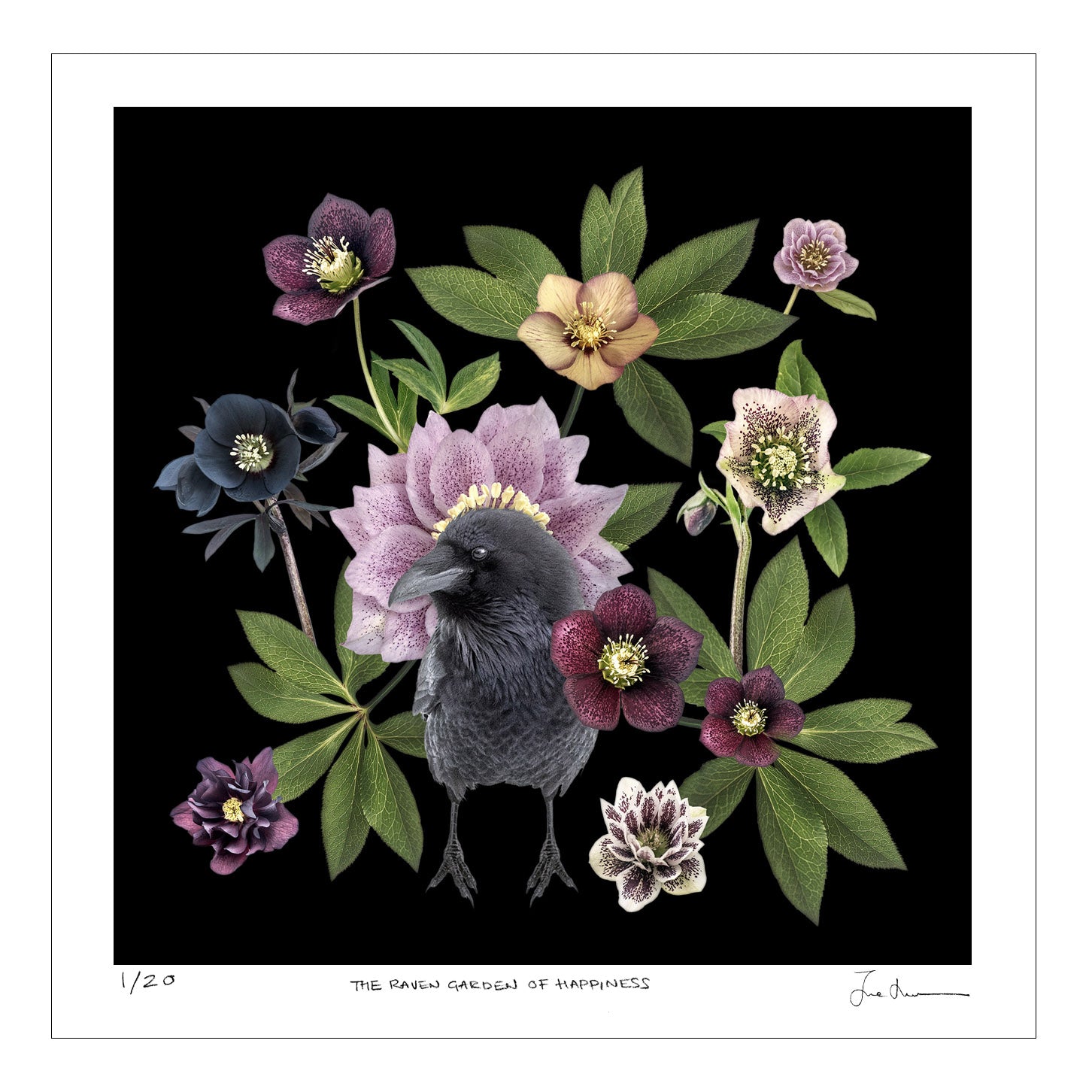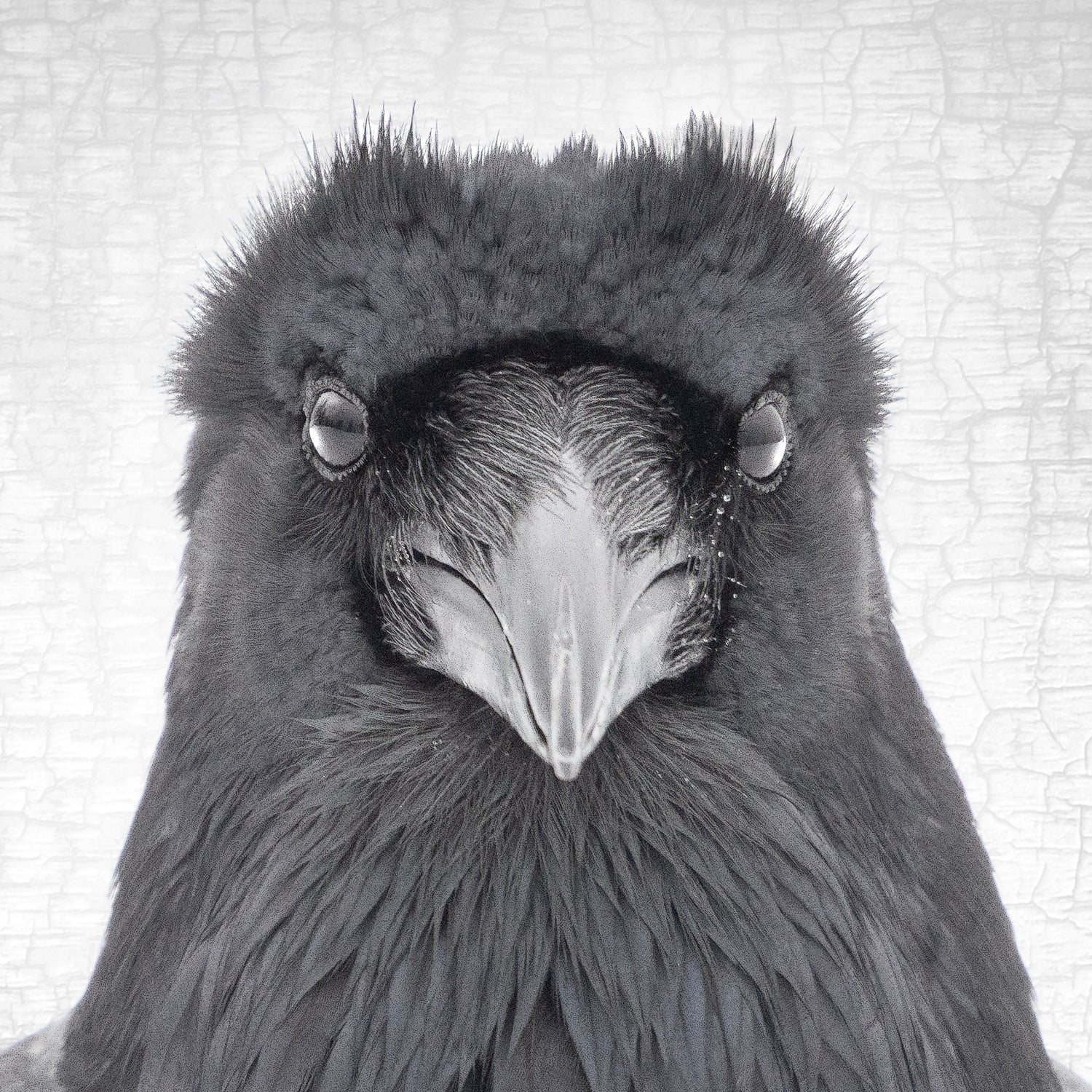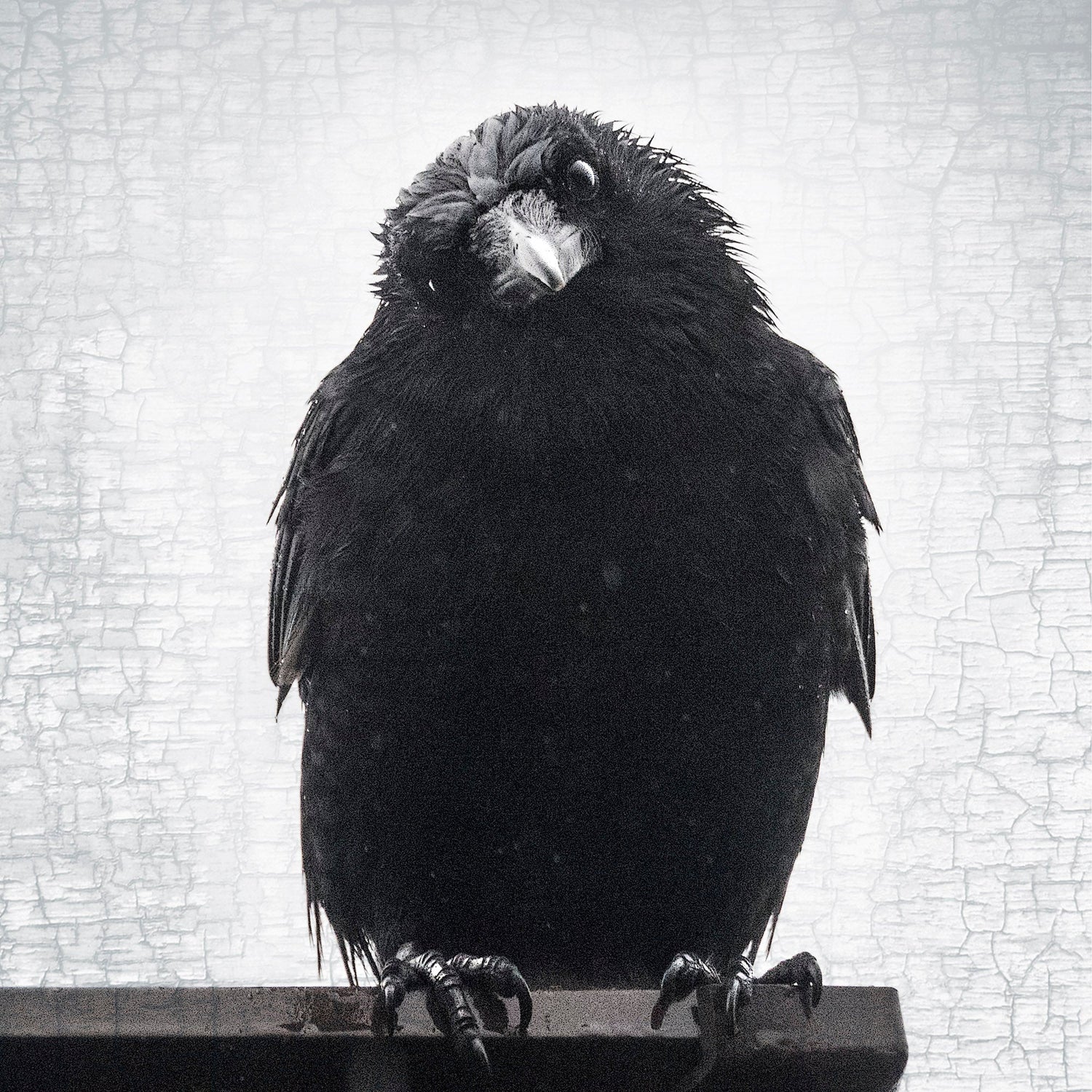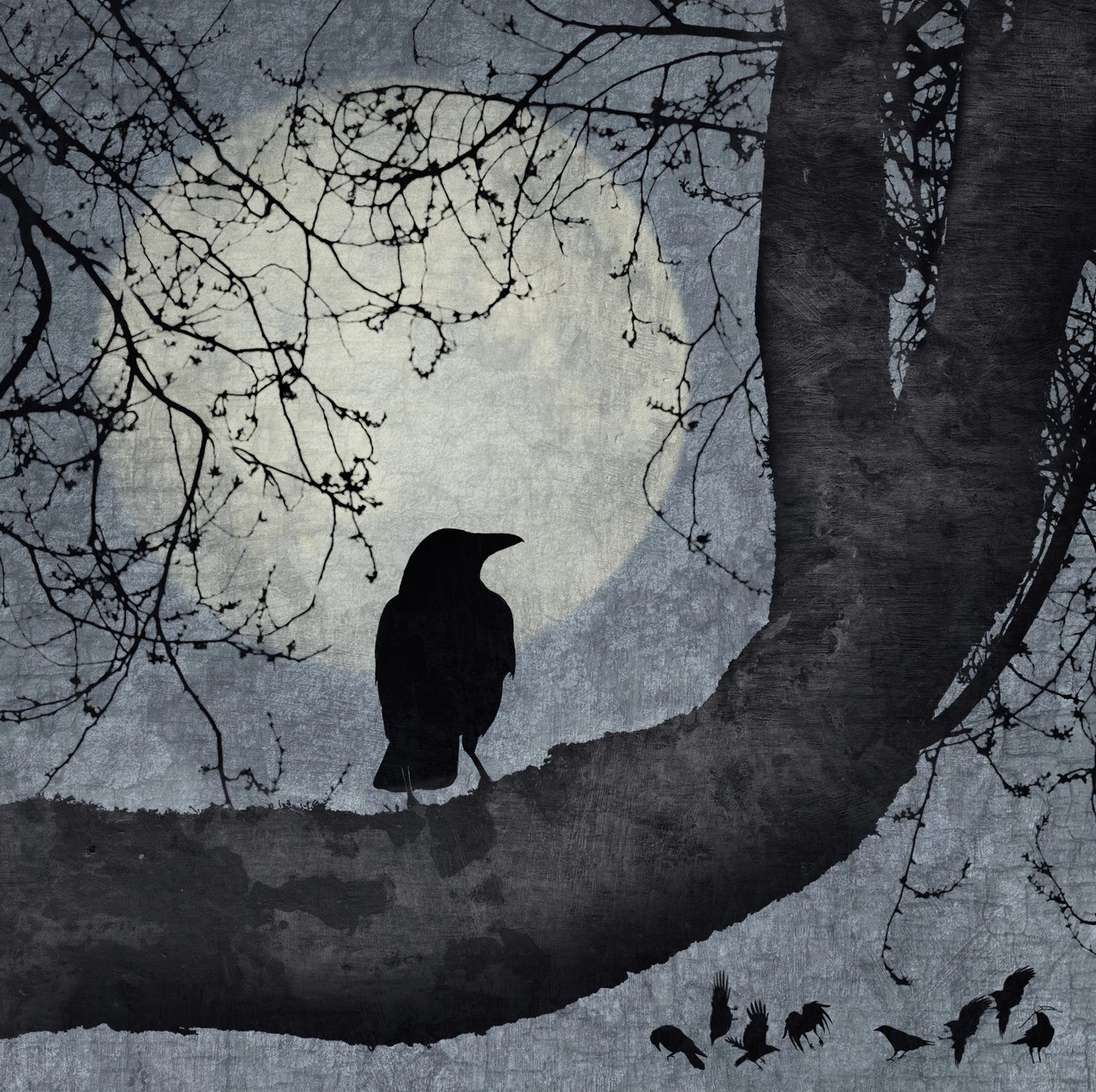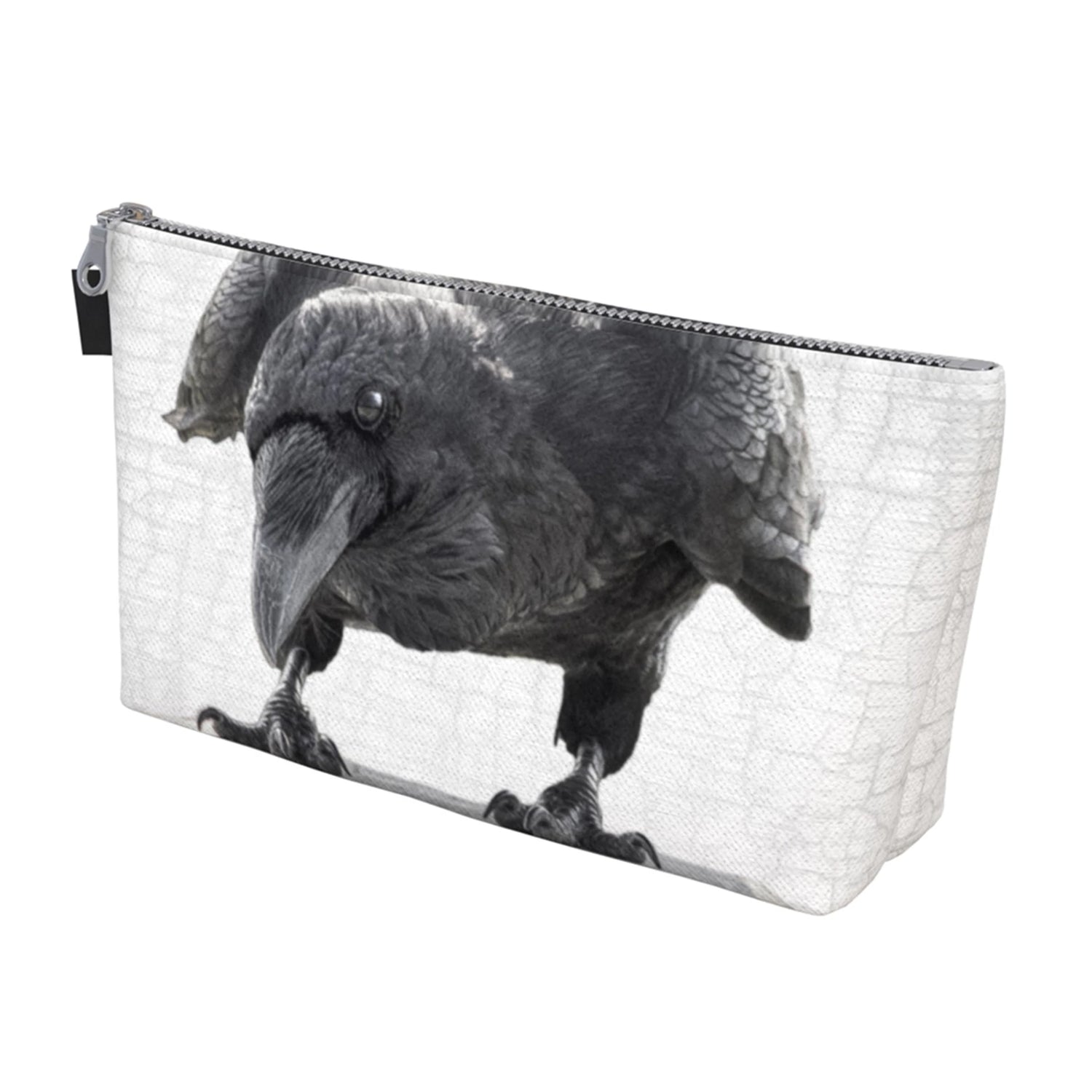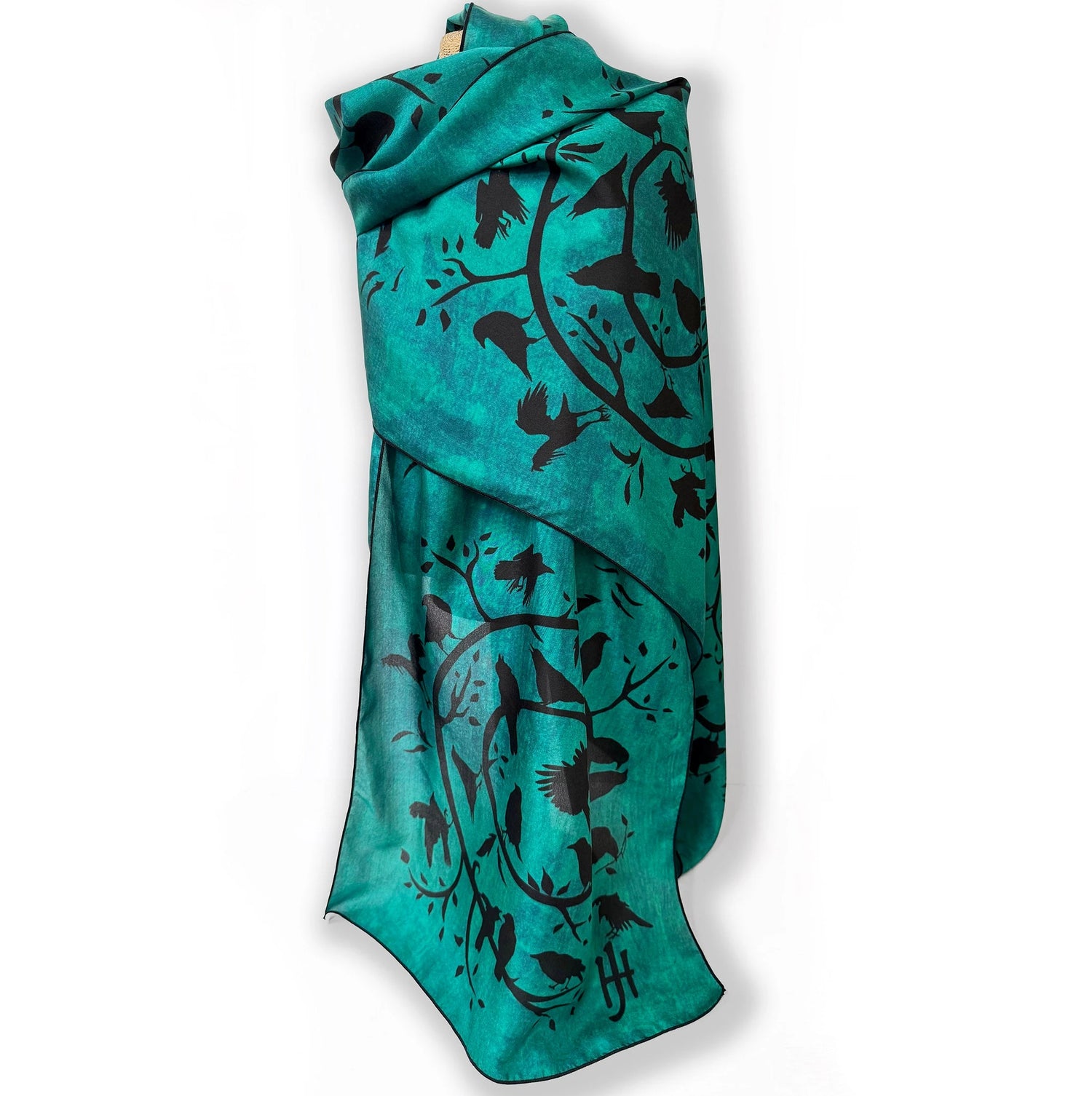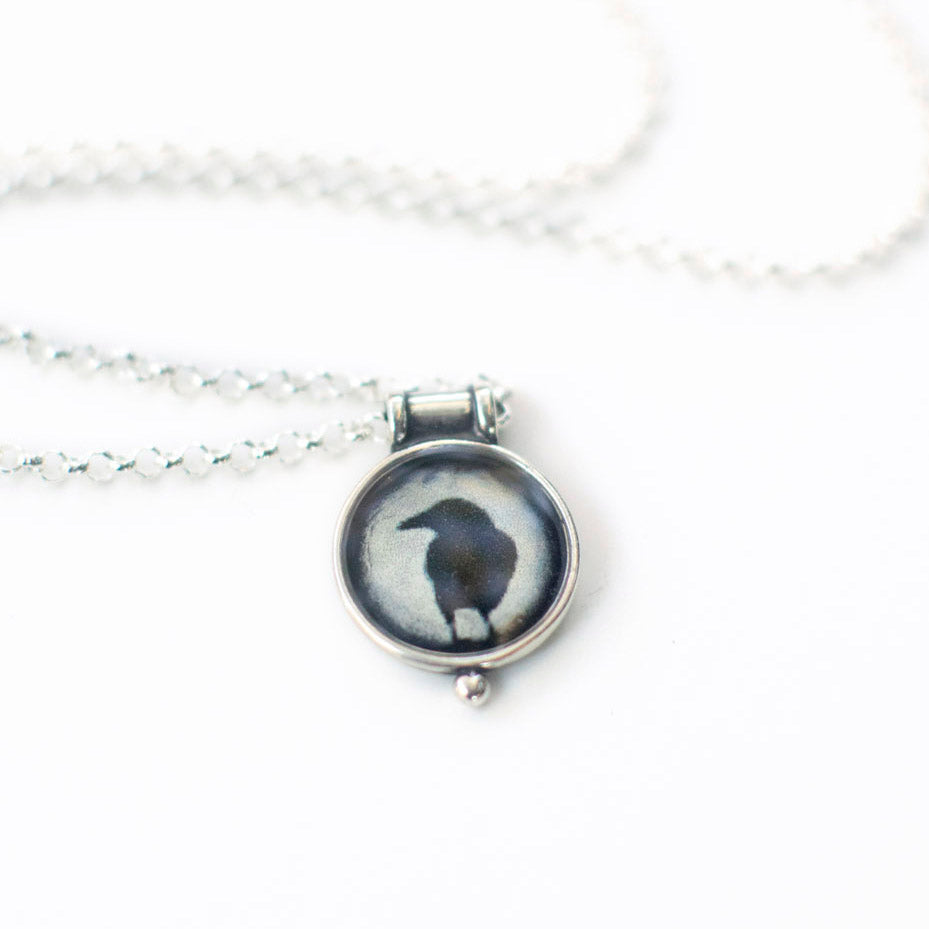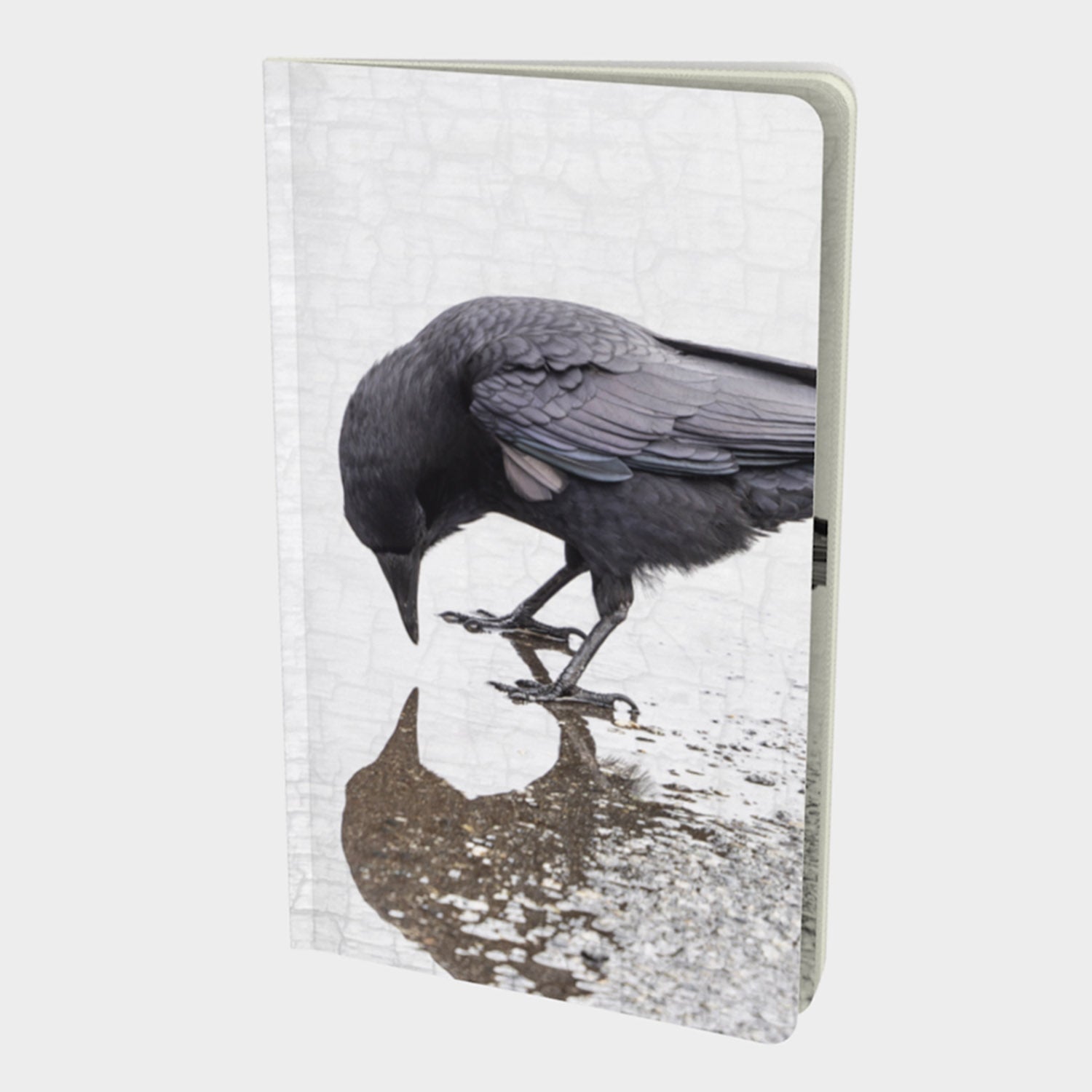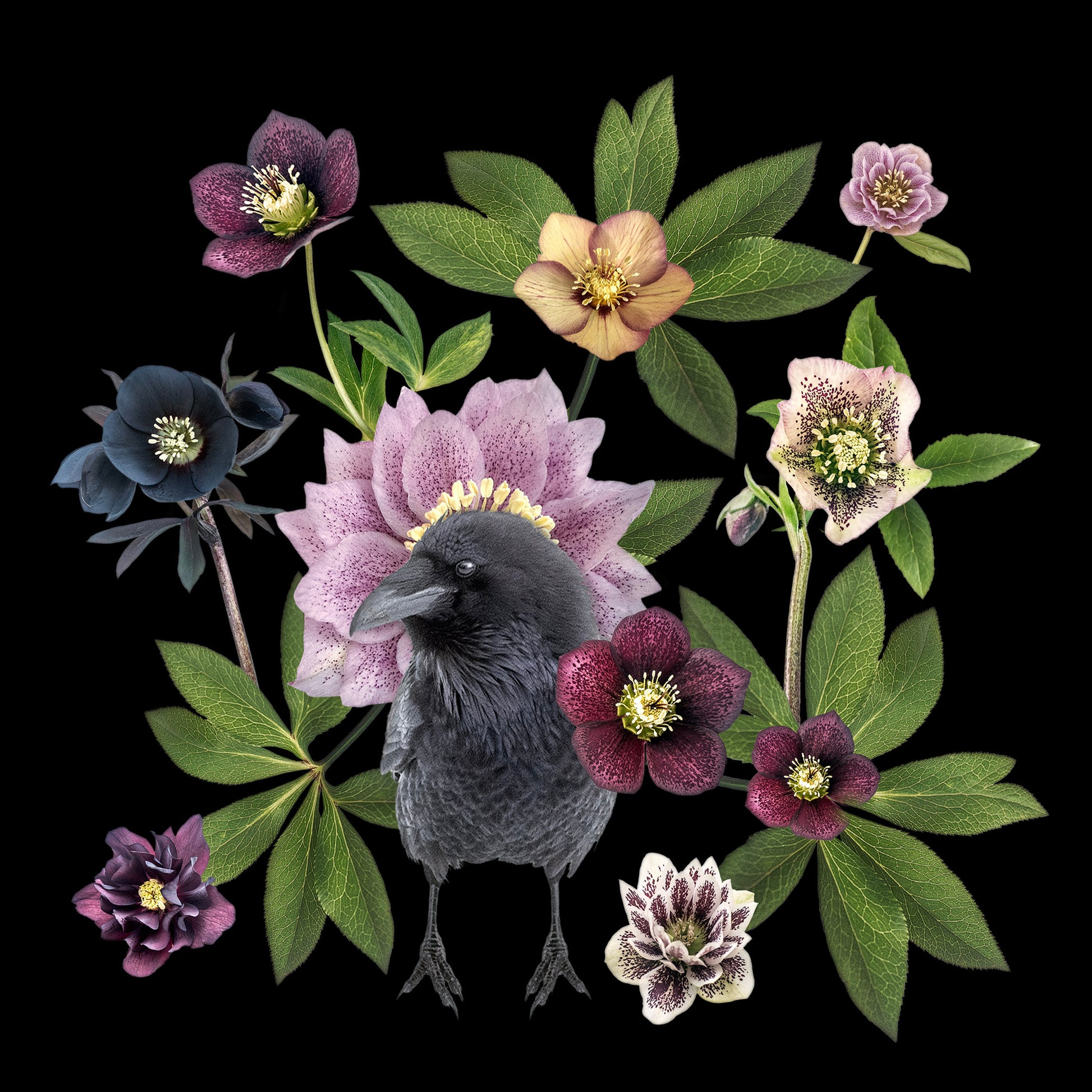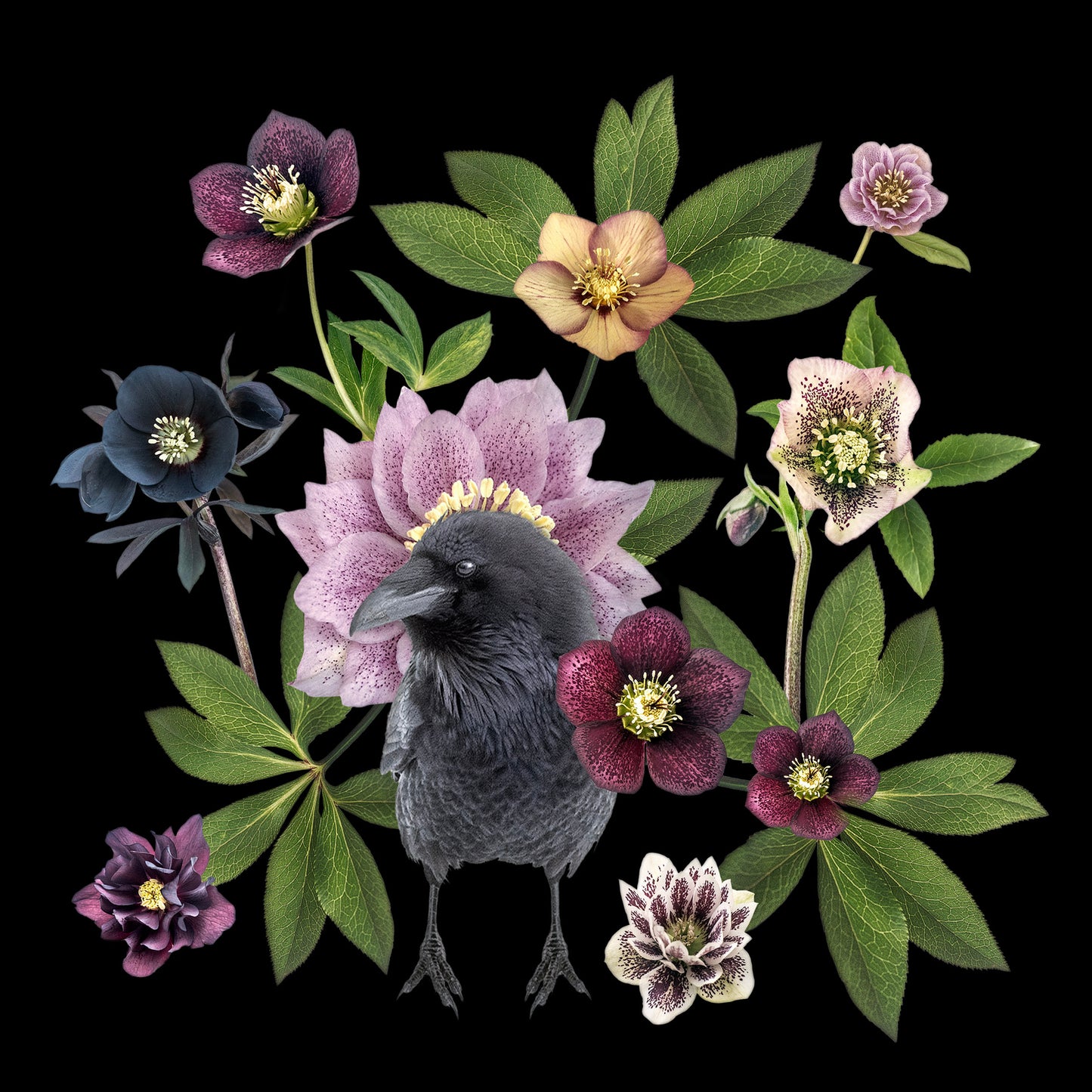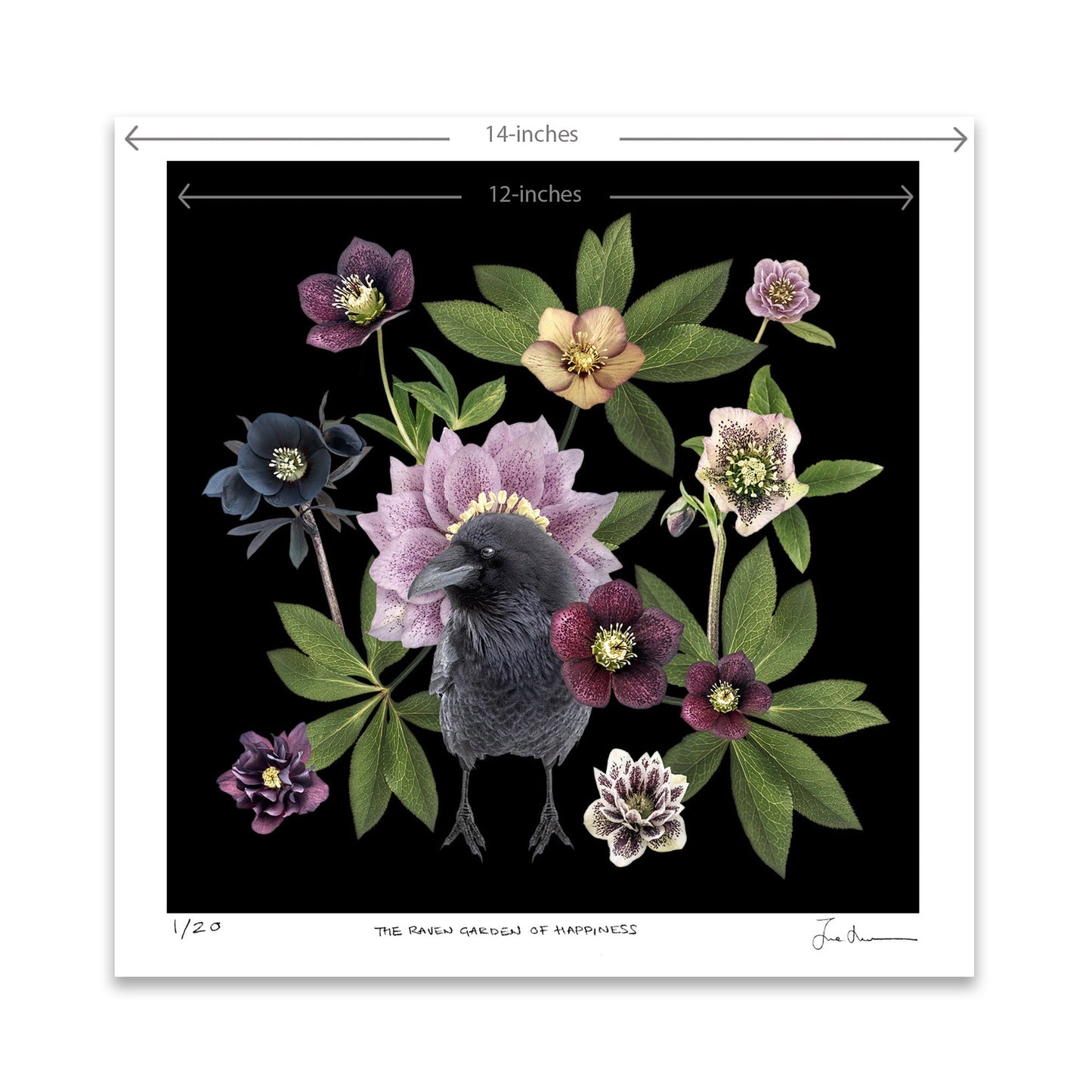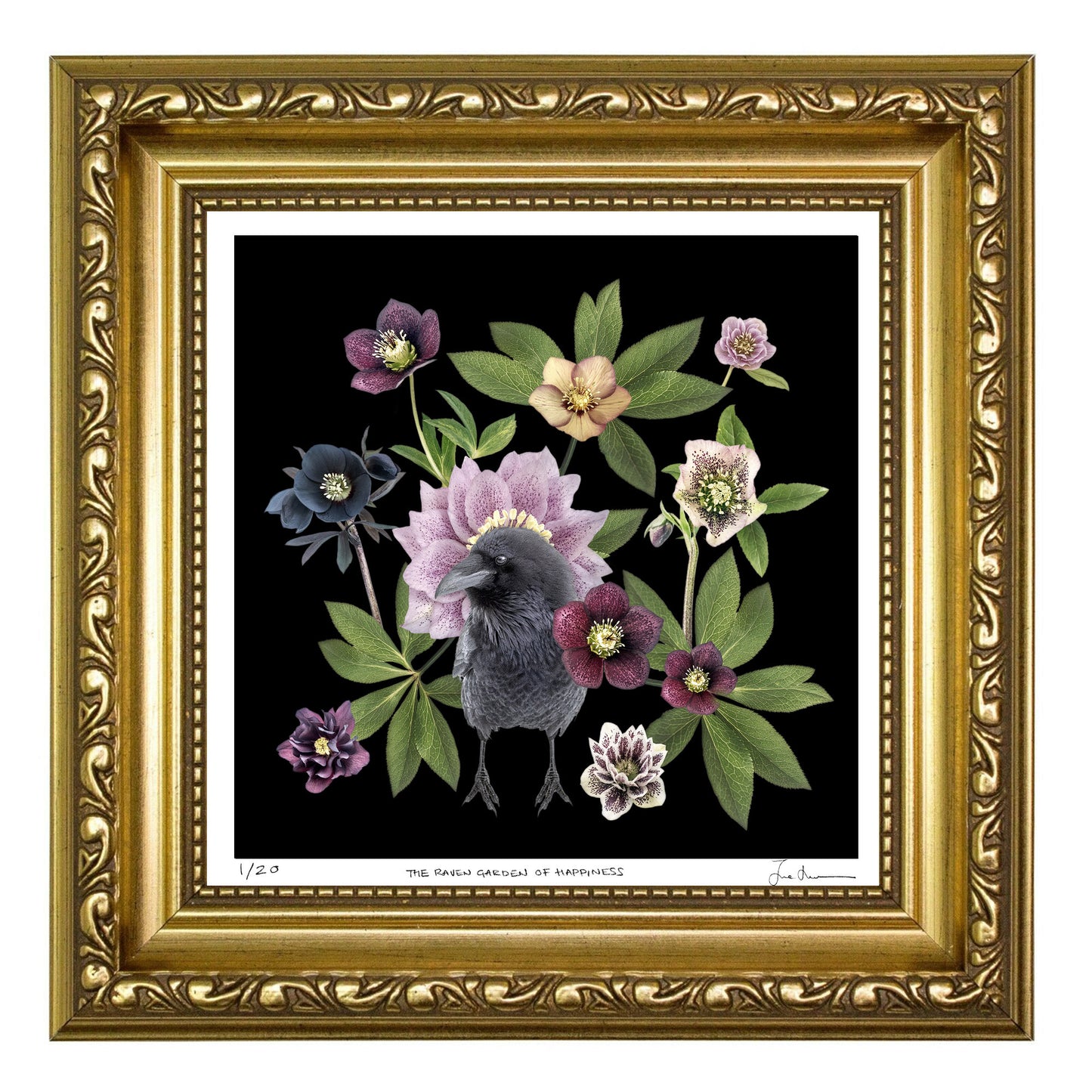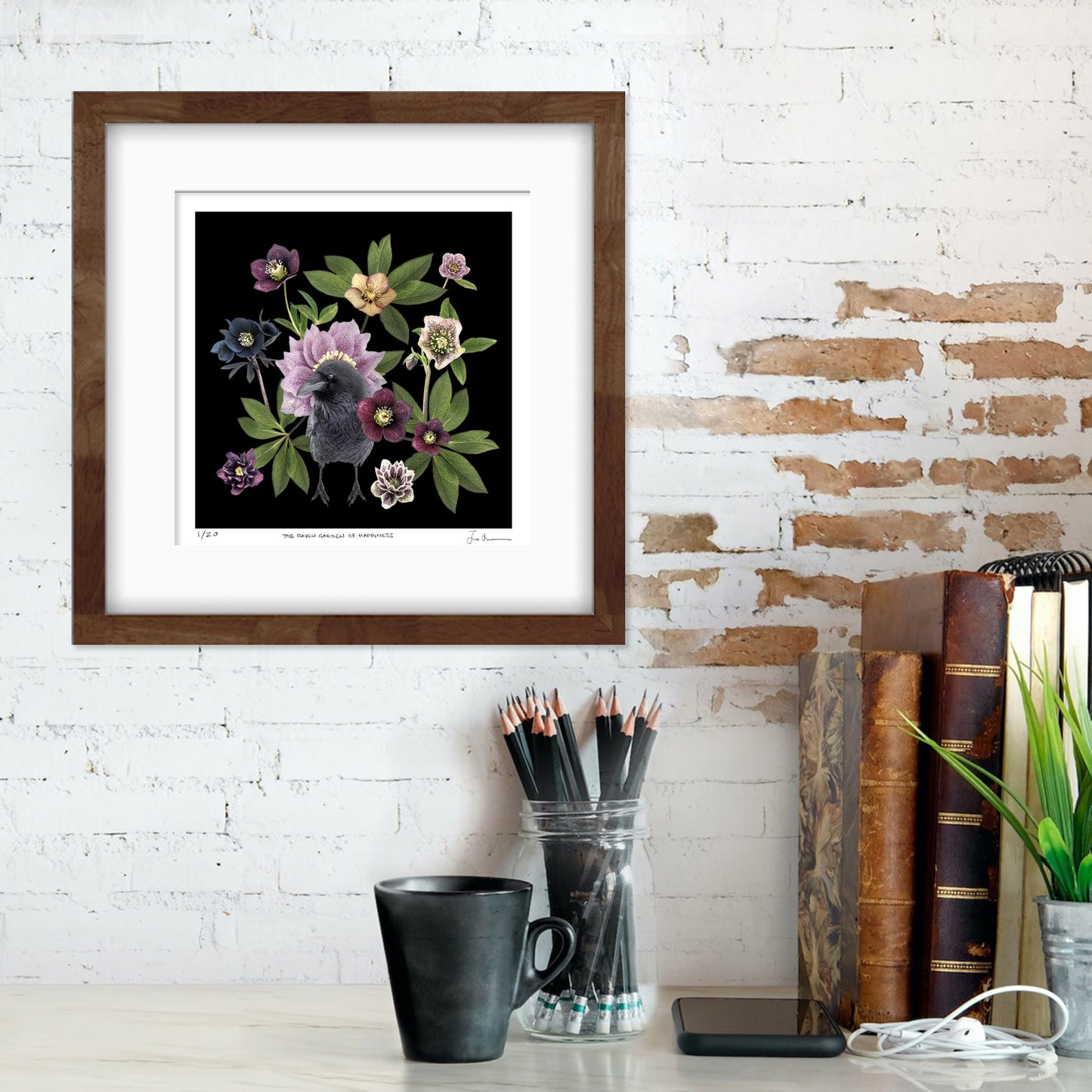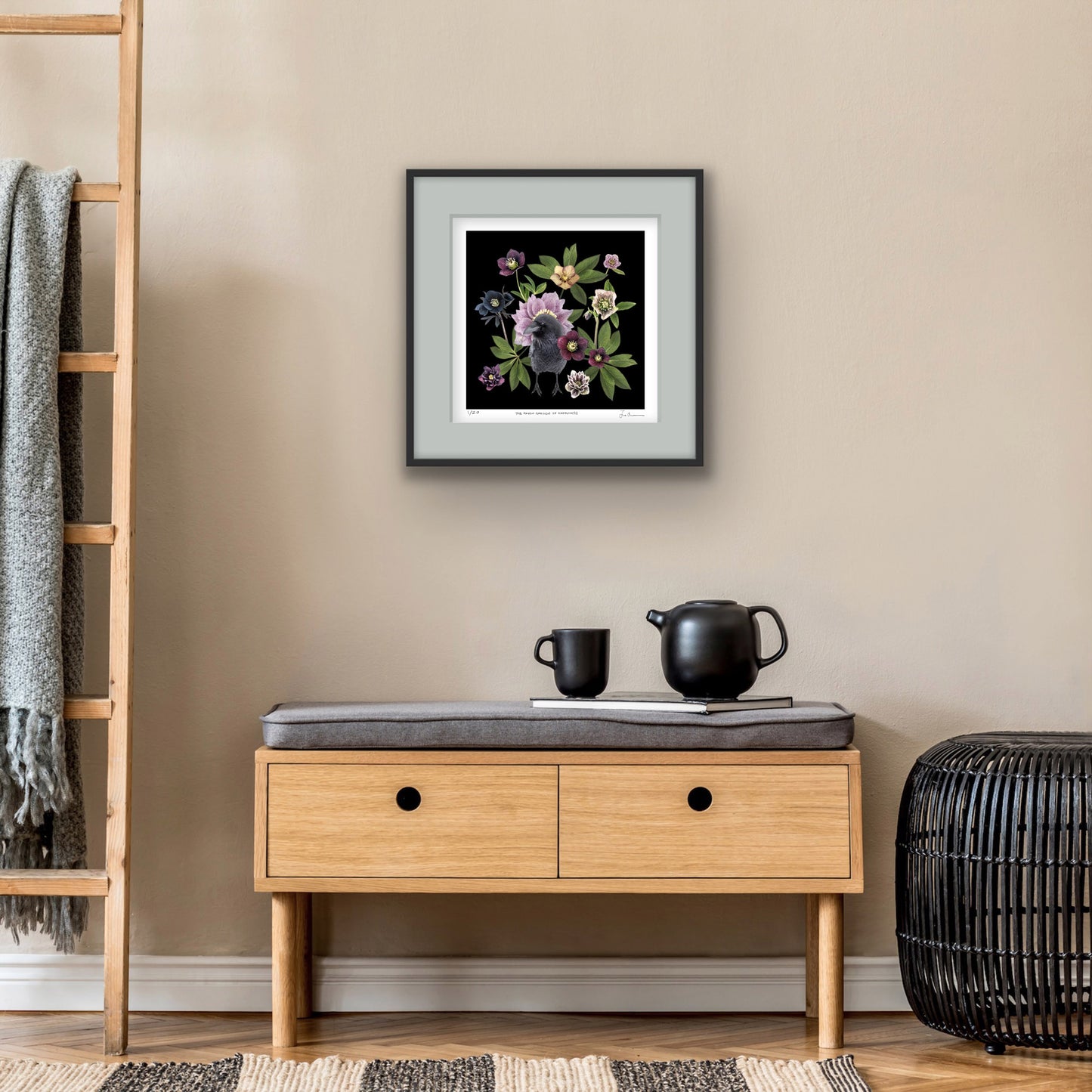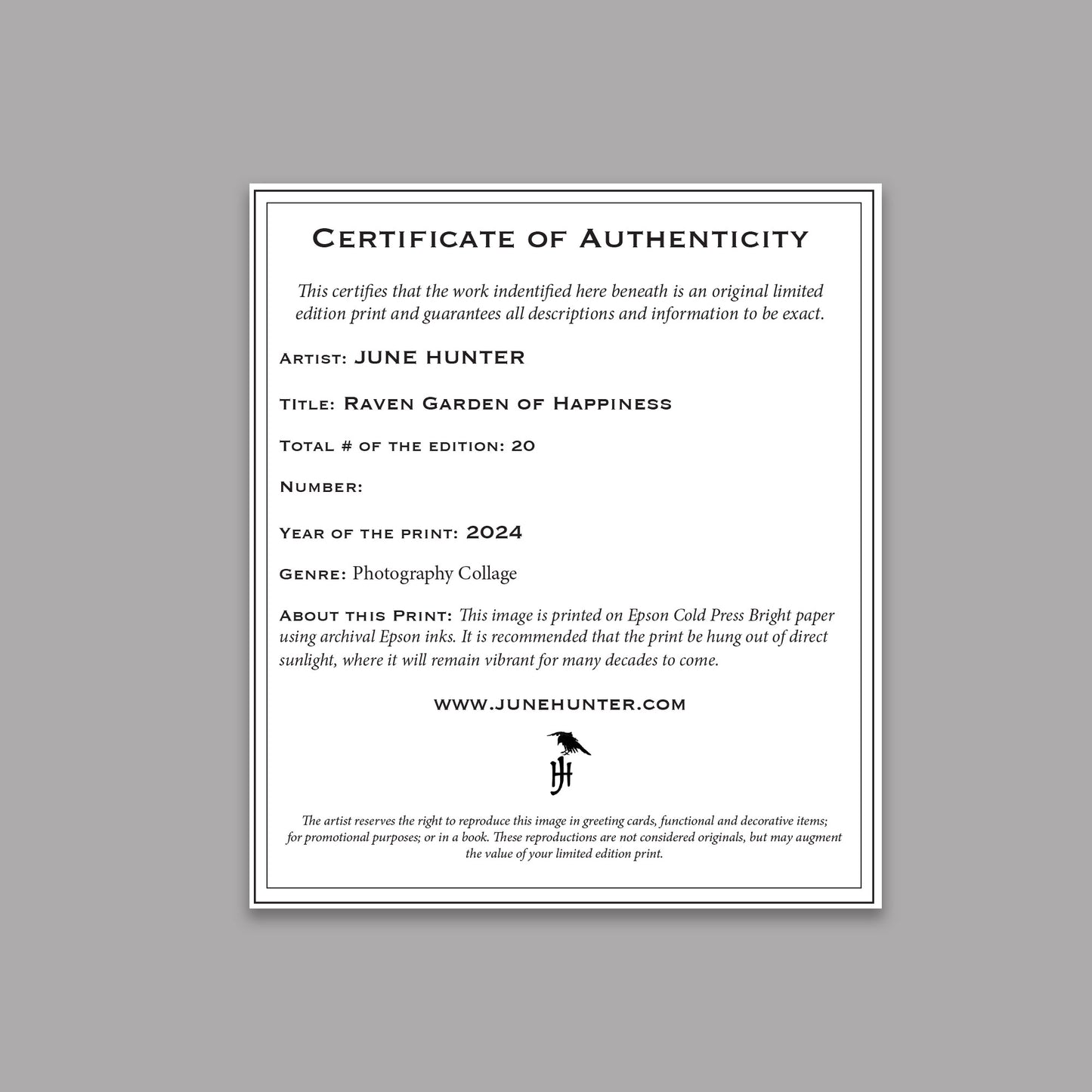Baby Crows: Everything You Need to Know about Corvid Fledglings
How to Help a Baby Crow ... Not Get Dive-Bombed by Their Parents
By June Hunter, Crow and Raven Photographer and Nature Enthusiast
If you've been wondering whether to help a baby crow, what they look like, when they hatch, how to spot one, and where they live, look no further.
This post about baby crows covers the most interesting fledgling crow facts.

What does a baby crow look like?
When it comes to spotting baby crows, many people often overlook them as they bear a striking resemblance to their adult counterparts. Once baby crows emerge from their nests, they’re already almost the size of fully grown crows.
However, despite their adult size, a few distinct features set baby crows apart during their early weeks.
One notable characteristic of baby crows is their beautiful blue eyes, which transition to a grey hue after a couple of weeks and eventually settle into the typical deep brown shade by summer's end.
 Baby crow with lovely blue eyes.
Baby crow with lovely blue eyes.
Additionally, these young crows exhibit a pink hue at the sides of their beaks when their beaks are closed. And when they open their beaks to beg for food, the entire inner part of the beak is a deep pink colour.
It has a conspicuous target-like appearance when they open their beaks wide as if to say, "Put food here now!"
Another noteworthy aspect of baby crows is their initial inability to fly, which explains why their protective parents might engage in dive-bombing maneuvers during the spring and early summer. These protective crow parents fear potential harm might befall their offspring, who are toddling along the ground and extremely vulnerable.
This is one of my fine art print of a local fledgling.
Young Crow Size
Young crows who have left the nest are close to the same size as adult crows. Adult crows in North America typically measure 17 to 21 inches in length from beak to tail. They have a wingspan of approximately 33 to 39 inches.
Young Crow Weight
While the exact weight of a fledgling crow can vary depending on the specific age and development of the fledgling, they are generally lighter than adult crows. Fledglings may weigh 8 to 14 ounces (225 to 400 grams), which is lighter compared to the average weight of adult crows, which ranges from 12 to 20 ounces (340 to 570 grams). As the fledglings grow and mature, they gradually gain weight and eventually reach the weight of adult crows.

Sorry, Hatchling Crows Don’t Look like Fluffy Black Chicks
Crow experts worldwide bemoan the baby crow misinformation that’s taken over the crow corner of the internet.
Young crows are often depicted as cute black fluffy chick-like creatures. This is not the case. Baby crows are not bright black fluffy birds. Those images circulating at random are usually images of a baby rail, which is a marsh bird of the family Rallidae.

Remixed image courtesy of Mike's Birds under Creative Commons.
 This crow is 10-days old.
This crow is 10-days old.
Photo courtesy of Bugaga under Creative Commons.
Hatchlings, i.e. the baby crows who have yet to leave the nest, are grey in colour, featherless, and look rather like mini dinosaurs. (+)

Baby crows are nearly the size of adult crows once they leave the nest.

What does a baby crow sound like?
Surprisingly, baby crows produce sounds similar to those of mature ducks.
When young, they don’t make sounds like the traditional crow caw. It's funny to hear these little ones emit noises akin to quacks.
Additionally, when the parents feed the babies, an interesting sound emerges. The parent crows carefully deliver the food directly into the baby's open beak, ensuring not to waste any morsels. This process results in a unique combination of sounds—something along the lines of contented yet slightly strangled noises as the food finds its way down the baby crow's throat.
Related Article: Read about Two Crow Families and Their Crow Offspring Drama
What are baby crows called?
When they leave the nest, baby crows are called fledglings and are just learning to fly. When they’re still up in the nest, recently hatched, and have yet to embark on their adventure in the wider world, they are called hatchlings. (+)
What does a baby crow eat?
Baby crows are quite versatile eaters, much like their parents.
They are omnivores and will consume almost anything digestible, although their food needs to be smaller during their early stages. It's fascinating to observe the parents breaking down larger items into smaller pieces, making it easier for the little ones to eat.

Worms are a delicacy that babies gradually learn to handle.
At first, they may playfully toy with the worms, uncertain whether to eat them or not. It's an amusing phase to witness as they go through the "is it food or not" learning program, where they pick up various objects like bits of paper, bugs, and twigs, attempting to determine their edibility. Through trial and error, they quickly determine what's OK to eat and what isn't.


The Water Problem
One significant challenge for fledglings crows, particularly during hot and dry summers, is finding water.
The parents diligently search for water sources and often dunk the food they provide into the water, ensuring that their offspring stay hydrated along the way.
If you’re a crow lover, it’s a good idea to have a bird bath or any container filled with water in your backyard or on your patio to help the crows and other birds stay hydrated and have a place to bathe. It's important to keep the bath clean, so it may need rinsing and re-filling several times a day. The young crows really need water, and it can be hard to come by when it’s hot and dry!

Siblings hang out at the local puddle.
When do crows lay eggs?
In Vancouver, the crows typically begin laying their eggs around April.
It's worth noting that sometimes there can be complications with the first nest, leading to some crows attempting to lay eggs again later in the spring for a second time. Once the eggs are laid, the female crow takes on the responsibility of incubating them for approximately two to three weeks.
The Brood Patch
Female crows develop a bare patch of skin underneath their body known as the brood patch, which aids in warming the eggs more effectively. The absence of feathers allows direct heat transfer to the eggs, ensuring optimal conditions for the developing embryos.
Who's the Mom? Who's the Dad?
This incubation period provides an interesting clue for distinguishing between male and female crows. If you observe a pair of crows in your neighbourhood and notice that one completely disappears for about two weeks in April, it's likely the female, as only the mother crows develop a brood patch in order to incubate the eggs.
Additionally, female crows may be observed begging for food from the males during nesting. This behaviour serves as a training exercise for the males to bring them food while tending to the nest.

How long do baby crows stay in the nest?
After the two to three-week incubation period, the crow eggs hatch, and it takes about a month for the young crows to leave the nest. It's remarkable how quickly they grow, transforming from hatchlings to fully-sized, albeit slightly dishevelled-looking crows.

This baby crow has left the nest but is taking cover in the bushes. Unfortunately if someone comes a long with a weedwacker, things could get dangerous!
How long will a baby crow stay with its parents?
Baby crows spend the entire summer with their parents.
The parents constantly feed and protect them, gradually encouraging independence. But as summer draws to a close, you can observe an interesting transition in parental behaviour.
The parents begin to indicate that the food is readily available, encouraging the babies to start fending for themselves. If the young crows persist in their demanding ways, the parents may become a bit irritable and gently nudge them towards independence, as if to say, "You're old enough now; go find your own peanuts or worms!" The odd parental peck might be delivered to a particularly persistent fledgling.

My print showing Mabel, a mother crow nearing the end of her supply of parental patience.
In autumn, the young crows have two possible paths—they can embark on their own journey to establish their lives or remain with their parents for another year.
The crow "yearlings" that stay with their parents are often female crows who assist the parents and continue learning vital skills and best practices for nesting as they prepare for their eventual independence.

Where do young crows live?
Once young crows leave the nest, they don’t return to it to sleep.
However, they don’t immediately join the roosting sites at night, as their flight capabilities are still limited. Instead, the parents stay with them and do their best to ensure their safety. Neither the fledglings nor the parents join the roost until the end of summer when the young crows have developed sufficient flying skills. During this time, the parents attempt to keep their offspring within the familial territory of about half a block.
However, being confused teenagers, the young crows may sometimes venture into neighbouring territories, leading to disputes with other crow families.

Related Post: Nesting News - A Tale of Crow Nesting
Unfortunately, the survival rate of fledgling crows is relatively low, with a 50% rate of survival in the first year of life.
They face numerous risks, such as cats, dogs, raccoons, eagles, hawks, traffic, flying mishaps, lack of water, not to mention being accidentally trod on my humans in those first few days out of the nest.

How do adult crows build their nest?
In Vancouver, the crows' nest-building begins around the start of March.
During this time, you may spot them flying around with twigs or perched in trees as they wrestle and break off suitable branches. Interestingly, crows can be quite selective about the twigs they choose, sometimes spending a significant amount of time trying to retrieve a specific twig only to decide it isn't to their liking.
It's almost like a young couple disagreeing about home décor preferences at Ikea. “I thought you liked that sofa.” “No, I don’t like sofas at all! You don’t even know me!"
Once they have gathered the twigs, the crow couples weave them together to form the nest's structure.
Crows are resourceful and will incorporate various materials. Observing fallen nest remnants, I’ve seen all manner of things woven into a nest, including zip ties and bits of string cleverly woven into the nest's construction.

A crow nest I found on the ground with zap straps, string and packing fluff, as well as twigs and leaves.
These clever birds will quite often build a "decoy" nest to confuse any observant predators — with the real nest being constructed secretly elsewhere.
 This is one of my fine art images of Mabel building her nest.
This is one of my fine art images of Mabel building her nest.
Once the basic structure is complete, the crows line the nest's interior with softer materials such as moss and bits of bark, particularly cedar bark, known for its antimicrobial properties. This choice helps maintain a clean environment within the nest, which is essential.
Keeping the nest as clean as possible is crucial to safeguard the nestlings from potential diseases. Crows are known to have mites, which is why they frequently groom each other to maintain cleanliness, but the presence of cedar bark can help deter mites from becoming a more significant issue, ensuring the overall hygiene of the nest.
Where do baby crows poop?
I'm so glad you asked! Nature, in the absence of hatchling diapers, has come up with the next best thing — the fecal sac. The baby crows excrete in these handy "to go" bags of mucous. The parent crows work diligently to remove these from the nests in order to keep everything in there as clean and poop-free as possible. A clue as to when the eggs have hatched is seeing adult crows with rather messy white beaks!

Long suffering parent crow, Bella.
Where do crows put their nests?
When choosing the location of their nests, crows must undertake a risk-benefit analysis of sorts.
They must consider various factors to find the right balance. Opting for higher nest placements offers protection against raccoons, which cannot easily reach the nests. However, this height also exposes the nests to potential threats from eagles and other airborne predators. On the other hand, if the nests are positioned lower, they are safer from eagle attacks but become more susceptible to raccoons, cats, and other ground-based predators.

For a racoon a fresh crow egg might be a tasty treat.
Best to keep your eggs away from them.
I recall an instance involving Marvin and Mavis, a crow couple that nested in the tall trees near our home. Sadly, one of their babies attempted its first flight a bit too early, which turned out to be its final flight.
Knowing how many disasters can befall a baby crow, you can perhaps empathize with the highly stressed parents and understand why it’s common for crow parents to dive-bomb humans during this season. So many things can go wrong with these fledglings, and the parents are desperately trying to keep their offspring alive.

When do crows lay eggs?
Crows typically start laying eggs in the early spring, usually around March or April, depending on the region.
This timing allows the young crows to have enough time to develop before winter. The exact timing can vary based on an area's climate, local conditions, and the specific species of crow.
What do crow eggs look like?
In the Pacific Northwest, crow eggs are typically pale blue to olive green and speckled with shades of grey and brown, with bigger blotches towards the thick end of the egg.
The exact colour of the eggs depends on the species of crow. Unfortunately, I haven't had the opportunity to observe a crow’s egg or active nest up close. However, according to Rob Butler, a renowned crow scientist I spoke to many years ago, there is an intriguing phenomenon where one of the eggs in the clutch appears brighter in colour than the others. This particular egg serves as a decoy or sacrificial egg of sorts. (+)
The purpose behind this intriguing strategy is that if a predator such as an eagle approaches the nest, it is likely to be drawn to this distinctive egg first. Consequently, the predator may take the decoy egg, allowing the remaining eggs a better chance of survival.

How long do crow eggs take to hatch?
How long does a crow nest for?
Nesting season is a months-long commitment for the parent crows.
February — beginning to seek out nesting sites
March — building the nests through March
April — laying eggs and incubating them in April
May — keeping the hatchlings fed, clean and protected in the nest
May - June — supervising the fledglings as they exit the nest, keeping them from harm as much as possible and keeping them fed and watered.
July - August — feeding, feeding and more feeding while trying to teach the fledglings how to forage for themselves.
September — time for celebration as the fledglings can feed themselves and can fly to the roost at night.

I am the cutest of my siblings. I am the loudest. Feed me. Feed me.
F-E-E-D M-E!!
What Should You Do with a Baby Crow on the Ground?
Have you ever wondered what to do when you spot a baby crow on the ground?
It's quite common for people to mistake these young crows for injured birds and rush to rescue them. Since we typically expect crows to glide through the air regally, it can be confusing when you find a crow on the ground.

This fledgling appears to be lost. But he's perfectly fine. His parents are probably hovering nearby, ready to dive-bomb you if you approach.
In the vast majority of cases, there's no reason to be worried when you find a fledgling on the ground.
Unless the baby crow has an obvious injury, such as a dangling wing, their presence on the ground is a normal part of their development.
It's actually best to leave them be and let their parents take care of them.
Of course, if you happen to find a baby crow on the road or dangerous location, you can certainly move them to the side to avoid any accidents. However, be prepared for the protective parents to swoop down and dive bomb you as they attempt to defend their offspring.
Remember, removing a baby crow from its natural environment not only disrupts its bond with its parents but also places unnecessary strain on wildlife rescue organizations. So, whenever possible, it's best to allow nature to take its course and let the baby crow remain in the care of its devoted crow parents. (+)
8 Common Questions about Baby Crows
1. Can baby crows fly?
Baby crows cannot fly for the first week or two after leaving the nest. It will take physical wing development, lots of practice and a certain amount of trial and error for them to get their "flying badge."
2. Why do we not see baby crows?
You might not realize you're looking at a baby crow since they are close to the same size as adult crows. In addition, it's not common to see hatchling crows because their nests are high up in trees where humans don't generally hang out.

3. How can you tell a baby crow from a baby raven?
If you are in an area where there are mostly crows, chances are the fledgling you see in a crow. Conversely, if ravens are common in your neighbourhood, it's quite likely a raven fledgling!
Just as there is a size difference between adult crows and ravens, a raven fledgling will be considerably bigger than a crow fledgling. Based on my limited experience with raven fledglings, they have proportionally bigger feet and legs than a baby crow.

4. Should I help or rescue a baby crow?
Unless a baby crow is injured, you should let the parents help and nurture the baby crow. Usually, when you find a baby crow on the ground, they are fine. They're still learning how to fly and may spend time walking about looking rather dishevelled and vulnerable.
5. What to do if you find a baby crow?
If you find a baby crow, and it is perfectly healthy, you should leave it alone.
6. What month do baby crows hatch?
In North America, baby crows typically hatch in May. However, the exact timing will depend on the area and when the eggs were laid.
7. How can you tell if it's a baby crow?
If you find a bird on the ground that looks about the size of a regular crow but with dull brownish feathers, it's likely a baby crow. Take a look at these pictures to identify if the bird you saw was a baby crow or not.

8. What is a fledgling crow?
A fledgling crow is a young crow who has left the nest and is learning how to fly. It is a stage in the development of a crow where it transitions from being a nest-bound hatchling to a more mobile and self-sufficient bird.
Baby Crows Abound
In summary, during the summer months, baby crows abound. You just might not see them very often. But if you do find a baby crow scuttling about on the ground, you don't have to worry. They're just doing their thing. Look around and you'll probably see their parents nearby hoping that their offspring will take flight. Ready to dive-bomb you at a moment's notice.
June Hunter Images
This article is based on an interview with June Hunter a crow and raven photographer and nature enthusiast. Our aim with these short articles is to bring interesting crow, raven and bird facts to more online readers while also highlighting June Hunter's bird photography and designs. To read June Hunter's popular blog the Urban Nature Enthusiast, where she shares stories about crows and ravens, please click HERE.
To view June's art, visit the home page for gifts, prints, and art and poke around.
Are You a Corvid Lover?
View a gallery of beautiful urban crows and crow art by June Hunter. If you'd like to add some feather finery to your home, check out June's many bird art collections.
Crow Art & Crow Landscapes
June Hunter is known for her crow photography and fine art prints. For more crow portraits, visit the Crow Characters series. For moody landscapes featuring crow silhouettes and gorgeous blue textures, visit the Blue Crow Landscape Series.
Fine Art Baby Crow Prints
Other Crow Articles
The Mystery of Crows with White Feathers
In the Midst of a Murder: Decoding the Fascinating Group Behaviour of Crows







